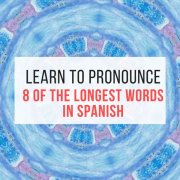Colombian and Mexican Spanish: What sets them apart?
Just imagine the Spanish language without its wide variety of accents!
We certainly can’t.
What makes Spanish so fascinating and unique is our wide variety of accents and dialects. They contribute to our cultural identity and a sense of belonging to our respective countries, regions, and cultures.
Native Spanish speakers can generally understand each other quite well, regardless of the accent. Sometimes we need to understand slang, expressions, or jokes from other Spanish-speaking regions, but we can grasp the context and communicate easily.
In previous articles, we examined the distinctions between Spanish from Spain and Colombian Spanish, as well as between Argentinian Spanish and Colombian Spanish.
Today’s article explores the key differences between Colombian and Mexican Spanish. But first, watch the following video and hear the main differences among these dialects.
So, what are the main differences between Colombian Spanish and Mexican Spanish?
Top 3 Differences Between Colombian Spanish and Mexican Spanish
These two accents are widely recognized and celebrated in Latin America due to their melodic tones and the expressive use of hand gestures and body language.
Mexican Spanish is known for its regional diversity, with various accents throughout the country. However, it is generally considered more neutral and easier to understand for learners. On the other hand, Colombian Spanish is characterized by its clear pronunciation and distinct cadence, making it an appealing choice for language learners.
Let’s delve into the top three differences between Colombian Spanish and Mexican Spanish!
Vocabulary and Expressions
Colombian Spanish and Mexican Spanish have their unique vocabulary and expressions. While many shared words exist, each country has its regionalisms and slang.
For example:
In Colombia, it’s common to use “chévere” (cool) and “parcero/a” (friend) in informal conversations.
In Mexico, you’ll often hear “padre” or “chido” (cool) and “cuate” or “amigo/a” (friend).
Or, for example,
If you are ordering food or asking for something at a store in Mexico, it’s common to hear, “¿me da…?” (can you give me…?). In Colombia, people usually say, “¿me regala…?” (can you gift me…?)
These variations in vocabulary add color and flavor to our daily interactions, reflecting the cultural nuances of each region.
The following video shows the different words used for the same object.
Pronunciation and Accent
Colombian Spanish and Mexican Spanish also differ in pronunciation and accent. Here are a few notable distinctions:
The pronunciation of the letter “s” tends to be softer in Mexican Spanish, while it is crisper and more distinct in Colombian Spanish.
Mexican Spanish often exhibits a “yeísmo” feature, where the sounds of “ll” and “y” merge into a softer “y” sound, similar to the English “y” in “yellow.”
In Colombian Spanish, “ll” and “y” are pronounced as a sharper “y” sound, closer to the English “j” in “jam.”
These differences contribute to the unique sound and musicality of each accent.
Cultural References and Idioms
Culture plays a significant role in language, and Colombian and Mexican cultures have distinct references and idioms. Some idiomatic expressions may differ, while others may have similar meanings but use different phrasing.
These cultural nuances add depth and richness to the language.
For example:
In Mexico, “echarle ganas” means to put effort into something, while in Colombia, a similar expression could be “ponerle empeño.”
In Mexico, “peda” refers to a party or a night out, while in Colombia, “rumba” is commonly used for the same concept.
These cultural differences reflect the unique perspectives and traditions of each country.
Learning Spanish opens the door to exploring diverse cultures and connecting with people from various Spanish-speaking countries.
Understanding these differences helps us appreciate the richness and diversity of the language.
If you’re eager to learn more about Colombia and the Spanish language, we recommend reading our articles on our blog.
And, if you’re ready to embark on a new adventure and need guidance in learning and improving the language, learn Spanish with us!
We hope to see you soon!
We hope this article has been helpful to you. If you want to take your Spanish to the next level, drop us a line, and we will send you all information!
You can also visit our website and social media channels to see what it is like learning Spanish with us!
Also, remember to read our monthly blog to learn more about the Spanish language and Colombian culture!
Hope to see you soon in Bogota!











